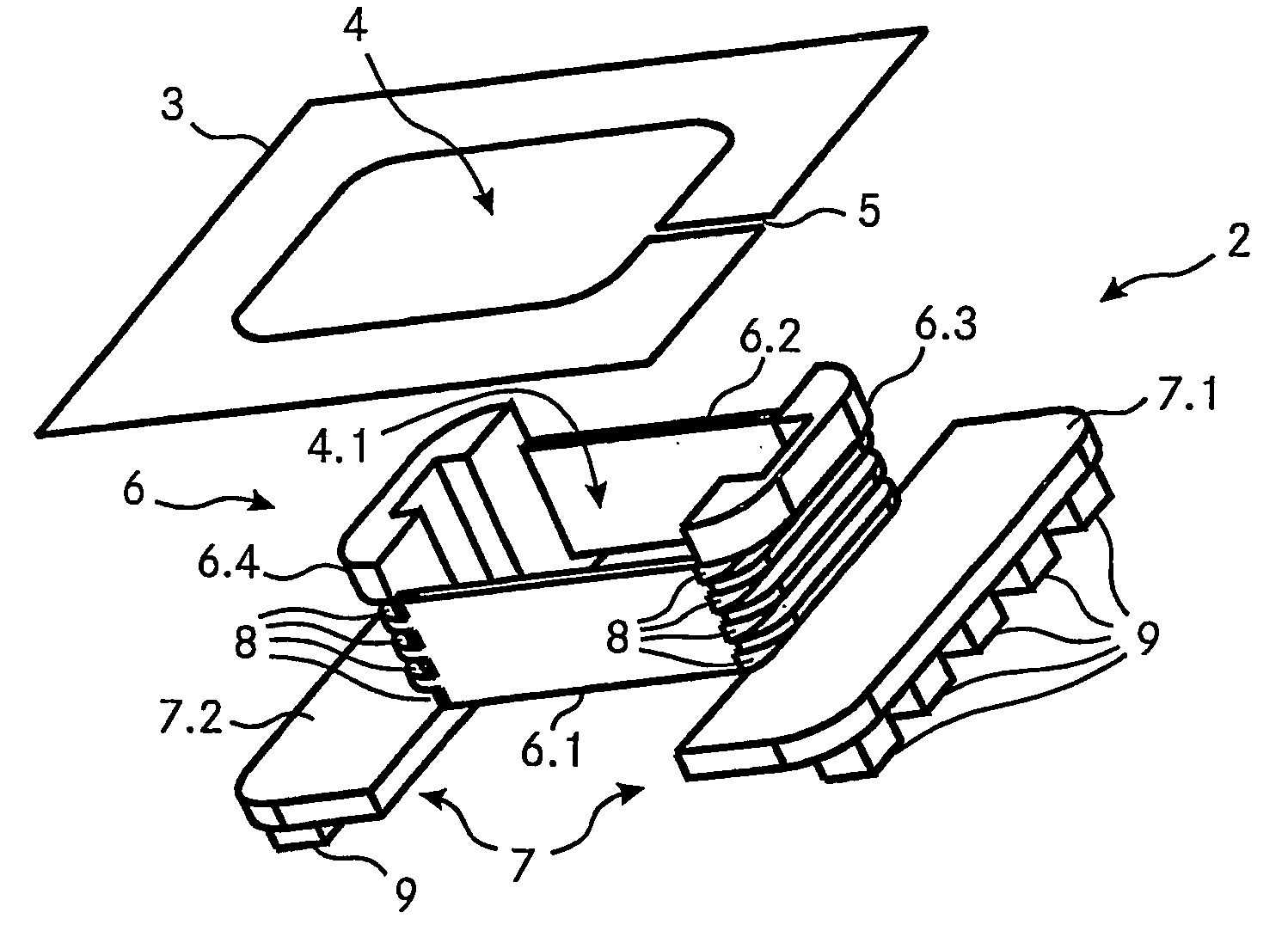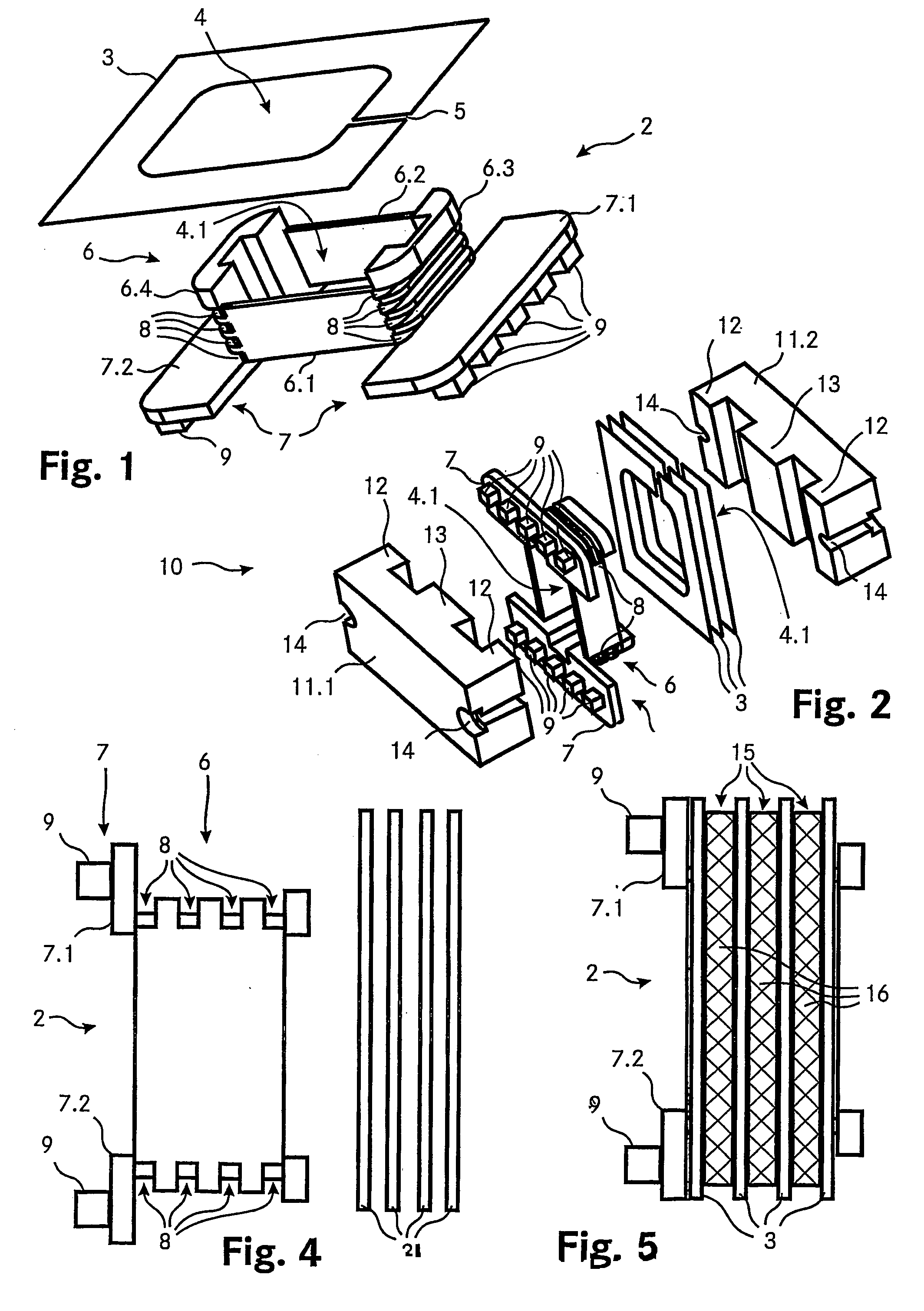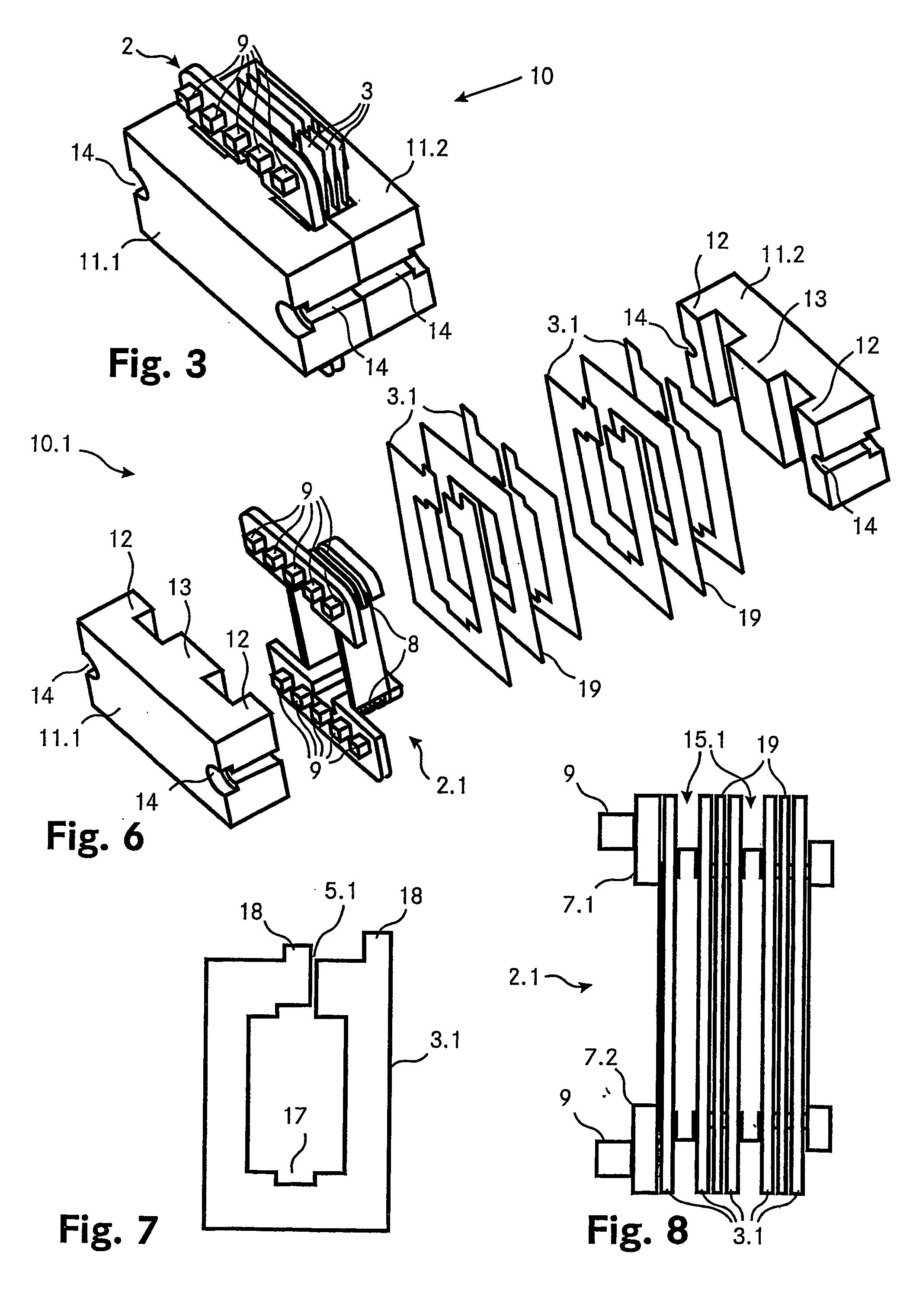Coil form
a technology of coils and coils, applied in the field of coils, can solve the problems of poor leakage inductance, heat dissipation, and suited for high-power applications, and achieve the effect of improving heat dissipation capabilities
- Summary
- Abstract
- Description
- Claims
- Application Information
AI Technical Summary
Benefits of technology
Problems solved by technology
Method used
Image
Examples
Embodiment Construction
[0043]FIG. 1 shows a perspective view of the coil form 1 according to an embodiment of the invention. The coil form 1 includes a coil body 2 and a separating plate 3. The separating plate 3 is for example made of copper or aluminium or any other metal with high heat conducting capabilities and has a thickness of about 0.3 mm to 0.5 mm. The separating plate 3 has a rectangular shape, comprises an opening 4 with rectangular shape as well and includes a slit 5 which is directed from the outer boarder to the opening 4, thereby interrupting any conductive path around the opening 4 of the separating plate 3.
[0044] The coil body 2 comprises a coil portion 6 and a flange portion 7. The coil portion 6 has substantially the shape of a hollow right cylinder with four side walls 6.1, 6.2, 6.3, 6.4 around an opening 4.1 for insertion of a magnetic core (not shown) of a transformer. The flange portion 7 is divided into two flange parts 7.1, 7.2, where each flange part 7.1, 7.2 is connected to on...
PUM
| Property | Measurement | Unit |
|---|---|---|
| thickness | aaaaa | aaaaa |
| area | aaaaa | aaaaa |
| electrically conductively | aaaaa | aaaaa |
Abstract
Description
Claims
Application Information
 Login to View More
Login to View More - R&D
- Intellectual Property
- Life Sciences
- Materials
- Tech Scout
- Unparalleled Data Quality
- Higher Quality Content
- 60% Fewer Hallucinations
Browse by: Latest US Patents, China's latest patents, Technical Efficacy Thesaurus, Application Domain, Technology Topic, Popular Technical Reports.
© 2025 PatSnap. All rights reserved.Legal|Privacy policy|Modern Slavery Act Transparency Statement|Sitemap|About US| Contact US: help@patsnap.com



